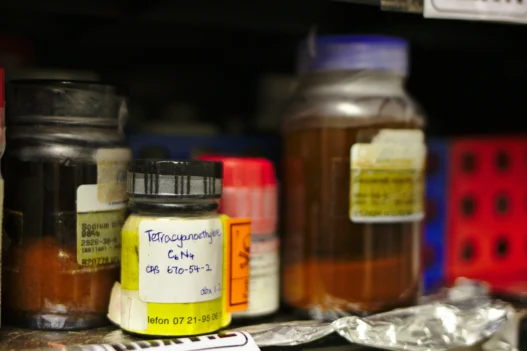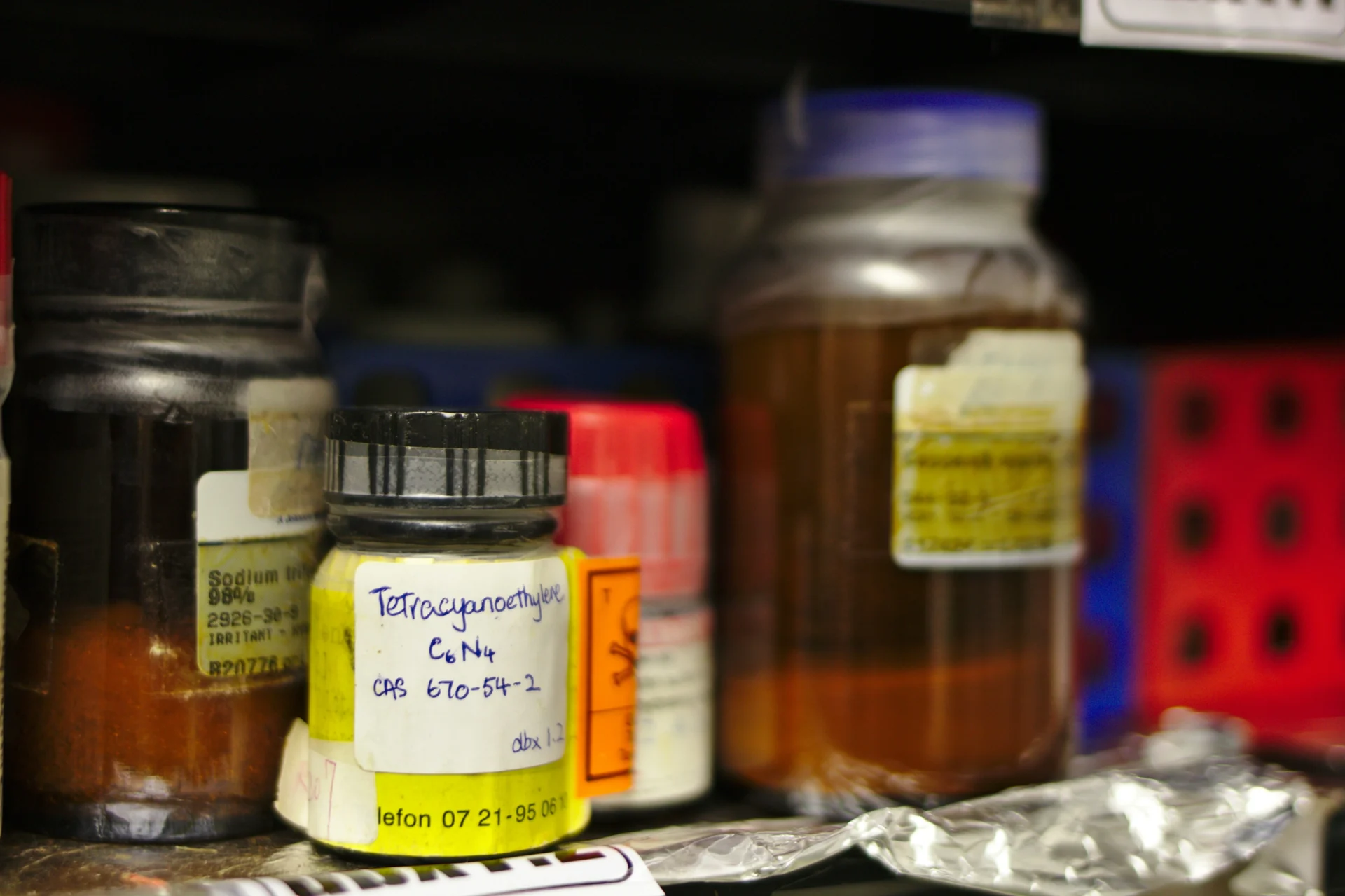Suprofen is a nonsteroidal anti-inflammatory drug (NSAID) that is commonly used to relieve pain, reduce inflammation, and decrease fever. It is prescribed by healthcare professionals for various conditions such as arthritis, menstrual cramps, and minor injuries. The accessibility of Suprofen in the medical field has made it a valuable tool in managing daily aches and pains, making it relevant to the well-being and comfort of individuals in their everyday lives.
Table of Contents:
- 💡 Commercial Applications
- ⚗️ Chemical & Physical Properties
- 🏭 Production & Procurement
- ⚠️ Safety Considerations
- 🔬 Potential Research Directions
- 🧪 Related Compounds
💡 Commercial Applications
Suprofen, an NSAID (nonsteroidal anti-inflammatory drug), has various commercial and industrial applications due to its ability to reduce inflammation and pain. In the commercial sector, suprofen is utilized in the production of topical creams and ointments for muscle and joint pain relief. In the industrial sector, suprofen is used in the manufacturing of anti-inflammatory coatings for medical devices.
In the realm of drug and medication applications, suprofen is primarily used for its analgesic and anti-inflammatory properties. It is commonly prescribed by healthcare professionals to manage pain and inflammation associated with conditions such as arthritis, tendonitis, and menstrual cramps. Suprofen is also used in the treatment of sports injuries, such as sprains and strains, to alleviate pain and swelling.
⚗️ Chemical & Physical Properties
Suprofen is a white crystalline solid with no distinctive odor. It is typically found in a powder form and does not emit any noticeable scent.
With a molar mass of approximately 261.27 g/mol and a density of around 1.29 g/cm³, Suprofen is heavier and denser than most common food items. For comparison, water has a molar mass of 18.02 g/mol and a density of 1.00 g/cm³.
Suprofen has a melting point of around 165-167°C and a boiling point of approximately 405-410°C. These values are much higher than those of common food items, such as sugar or salt, which typically melt or boil at lower temperatures.
Suprofen is sparingly soluble in water and exhibits low viscosity. In comparison to common food items like sugar, which is highly soluble in water, and honey, which is highly viscous, Suprofen falls somewhere in between in terms of solubility and viscosity in water.
🏭 Production & Procurement
Suprofen is produced through a series of chemical reactions that involve the synthesis of various precursors to ultimately form the molecule of Suprofen. The process typically involves several steps, including the condensation of acyl chlorides with 2-aminothiophenol, followed by further refinement steps to purify the final product.
The procurement of Suprofen typically involves sourcing the necessary raw materials and chemicals from various suppliers. Once the raw materials are acquired, they are processed according to the established procedures to produce the final product. The transportation of Suprofen may involve various methods, such as shipping in bulk containers or smaller quantities via air or ground transportation.
Suprofen can be procured through pharmaceutical manufacturers, chemical suppliers, or distributors who specialize in the production and distribution of pharmaceutical products. These suppliers may offer Suprofen in various forms, such as raw material for further processing, intermediate products for pharmaceutical manufacturing, or finished dosage forms for direct use. The procurement process often involves quality control measures to ensure the purity and potency of the final product.
⚠️ Safety Considerations
Safety considerations for Suprofen should be taken seriously due to its potential for causing irritation or sensitization when in contact with skin. As with any medication, proper handling and storage of Suprofen are essential to prevent accidental ingestion or misuse. It is recommended to wear appropriate personal protective equipment when working with Suprofen, such as gloves and safety glasses, to minimize risks of exposure.
Hazard statements for Suprofen include warnings about its potential to cause skin irritation and respiratory irritation. Additionally, Suprofen may cause damage to the eyes if not handled properly. It is important to avoid direct contact with skin, eyes, and mucous membranes when working with this substance. Proper ventilation should be ensured when using Suprofen to reduce the risk of inhalation.
Precautionary statements for Suprofen include recommendations to wash hands thoroughly after handling and to avoid breathing in dust or vapor. In case of skin contact, affected areas should be rinsed with plenty of water. If Suprofen comes into contact with eyes, they should be flushed with water for several minutes while removing any contact lenses. It is important to seek medical attention if irritation persists or worsens.
🔬 Potential Research Directions
Potential research directions of Suprofen include investigating its efficacy in treating various inflammatory conditions, such as rheumatoid arthritis and osteoarthritis. Experimental studies could explore the drug’s mechanism of action and its impact on inflammatory markers in the body.
Furthermore, researchers could delve into the safety profile of Suprofen, particularly in terms of gastrointestinal and cardiovascular side effects. Long-term studies may be warranted to assess the potential risks associated with prolonged use of the drug.
Additionally, pharmacokinetic studies could be conducted to determine the optimal dosing regimen for Suprofen, taking into account factors such as age, gender, and concomitant medications. Comparative effectiveness research could also elucidate how Suprofen stacks up against other nonsteroidal anti-inflammatory drugs in terms of efficacy and safety.
🧪 Related Compounds
One similar compound to Suprofen based upon molecular structure is ibuprofen. Ibuprofen belongs to the class of nonsteroidal anti-inflammatory drugs (NSAIDs) and is commonly used to reduce pain, fever, and inflammation. It has a similar chemical structure to Suprofen, with a carboxylic acid group attached to the aromatic ring.
Another similar compound to Suprofen is fenoprofen. Fenoprofen is also classified as an NSAID and is used to alleviate pain and inflammation. It shares a similar molecular structure to Suprofen, with a carboxylic acid group attached to the aromatic ring.
Ketoprofen is another compound related to Suprofen in terms of molecular structure. Like Suprofen, ketoprofen is an NSAID used to treat pain, inflammation, and fever. It has a similar chemical structure with a carboxylic acid group attached to the aromatic ring.









